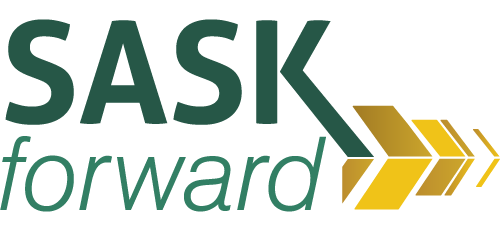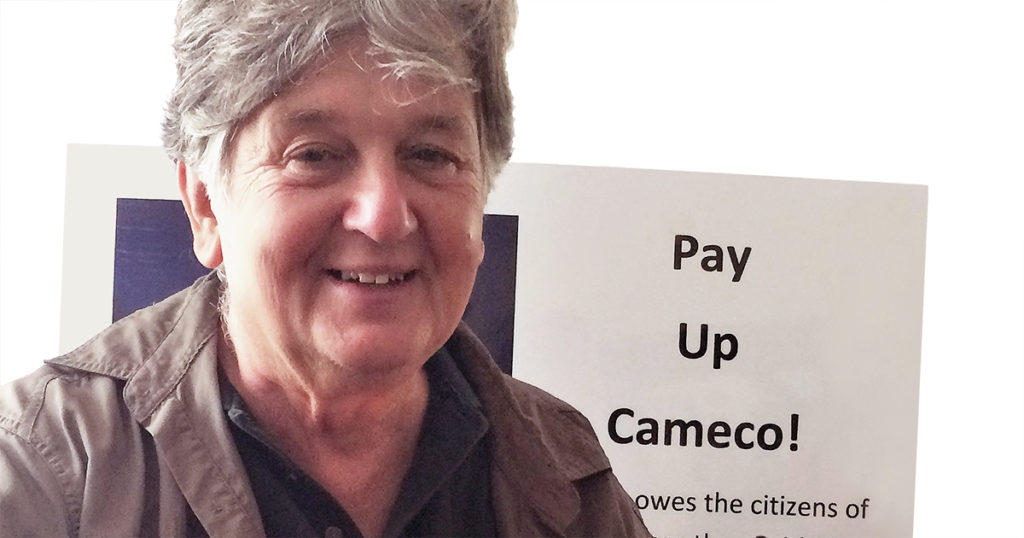Re-imagining the future together
RealRenewal’s some 200 members include parents, teachers, school staff, students, education experts and community members province-wide who share common cause in defending and supporting public education in Saskatchewan. We conduct research on education issues and gather ideas the public through forums, workshops, online surveys, and requests for written input.
In preparation for SaskForward, we invited our members to provide written comments to RealRenewal on their visions for the future of education, in areas such as student support, teacher and staff support, curriculum, governance, and Indigenous education. We received thoughtful and detailed contributions to this submission from teachers (12); parents/guardians (5); education workers/worker representatives (3); education administrators and trustees (2), and community members (2). The participants represented a breadth of experiences and perspectives, from young parents experiencing the education with new eyes, to teachers with many years of classroom experience.
There was diversity of opinion around details of education funding, curriculum focus and governance. For the most part, however, a shared future vision emerged around key concepts, including support for:
- Enhanced local governance and democratic engagement
- Schools as community hubs
- Holistic, enriched learning
- Smaller class sizes and improved student-teacher ratios
- Support for diverse needs of students
- Professional autonomy, respect and support for teachers and staff
- Indigenous-led education
- A more creative, humanistic approach to education
RealRenewal has an additional body of research and policy positions developed over the past 10 years. For the most part, these documents line up well with what we heard from the public regarding transformational change; they can be viewed at www.realrenewal.org.
The purpose of our submission is not to rehash RealRenewal’s past policy positions, however, or to critique the current system, though there are many points worth critiquing. Rather, the intention is to draw out some broad visions for the future contained in the public input we received, honouring the time and thought people put into their responses. From these hopeful responses, we can imagine a fundamental transformation of public education for Saskatchewan children and their communities.
What follows are some of the characteristics of this re-imagined future.
In the future, education is a core social undertaking
In a transformed future, education will no longer be framed primarily in terms of economic returns and revenue generation. As one respondent put it: “I would like to see us put a strong education system at the core of who we are and where we are going in this province. It is the right thing to do. It is a sound investment in our future. And despite its shortcomings, education has the potential (more than any other “system”) to reduce the deep divisions in our province/society (ie. class/race/base ability). When we are able to decrease divisions, and increase cohesion, we all benefit.”
This vision requires more than a standard call for increased education funding – it requires a sustained, sincere commitment to building a world that will support the next generation, through quality education, a greener planet, civic engagement, and political leadership that is ethical and forward-looking, to name some of the characteristics suggested in the written responses. Such thinking demands revolutionary attitudinal change, not only within our education system, but within our social system as a whole.
Education planning is no longer defined by austerity
It is time to put children’s needs first, and time to invest in education, were sentiments frequently expressed. To achieve this turn-around, several respondents pointed to breaking long-established patterns of enforced austerity and lean management. “I would like to see ‘transformational change’ NOT used as a catch phrase to mean cutbacks,” wrote one participant.
Many respondents spoke up for improved funding. Basic supplies, staffing levels and extracurricular activities should be protected from cost-cutting, and further investment should be made in staffing levels and technological infrastructure. While some efficiencies can be reached within current budgets, “there are virtually no resources wasted in public education.” Meanwhile, constant scrimping has become a dead weight on our province’s future. “Education is the best investment we can make,” wrote one respondent.
Decision-makers seek simple efficiencies instead of drastic cuts
Some felt funding levels are currently sufficient but could be better allocated to frontline education needs. From this viewpoint, upending or drastically cutting the education sector was seen as overkill, as long as simpler efficiencies can be implemented. For example, some savings “could accrue with more co-operation between the Public and Catholic School systems; e.g., busing students, bulk purchasing of materials.” There were also suggestions to reduce administrative spending: “Fewer superintendents and other positions at the division office. The divisions are too top heavy,” wrote one respondent. Less money should be spent on administration and report generation. Other suggestions were:
- Put Adult Basic Education into one Ministry
- Have a discretionary fund for experimentation into new & innovative plans.
- Created a costed and funded 10-year plan
- Develop a value-for-money tracing system
- Reallocate resources from top-heavy administration to classroom supports
- Replace the current funding formula with a needs-based formula “ex. learning challenges, number of students per class, English as an Additional Language, etc, and the needs of a particular division”
Failed ‘audit culture’ is put to rest
Several responses specifically suggested curtailing standardized tests as an ‘efficiency’ measure. Some expressed concern about the current standardizing testing leading to school-to-school comparisons and linking teacher wages to test results, conditions that would place schools serving disadvantaged communities at risk. There are many methods teachers use to assess and measure their pupils’ progress on a daily basis, and that are directly connected to classroom learning. This stands in contrast to standardized testing regimes whose primary purpose is to generate statistical data for government administrators. A major concern is that externally imposed standardized testing soaks up time and resources that could be put toward enriching the curriculum and improving student supports.
“The amount of standardized testing being enforced places intense pressures on classroom teachers and takes away from class time used for lessons and learning,” noted one respondent. It was pointed out that, despite the increased emphasis on measuring and testing in the past several years, Saskatchewan’s PISA standing has not improved, suggesting the strategy is not working and it is time for new ideas. One contributor wrote, “Quiet honestly, I am not sure what we have to gain by increasing our score on standardized tests at the community level. I want the current government to please tell me how higher scores on standardized exams lead to better outcomes in: – civic engagement – health and wellness (physical and mental) – gains in meaningful, long-term employment.” Concern was also expressed that constant auditing of test scores ‘unbalances’ the curriculum by placing too much emphasis on subjects that are the easiest to quantitatively measure, i.e. math and reading.
The possibilities for a standardized testing-free future include a less pressured school day, with more space for learning, teaching, play, and community engagement. As one respondent put it, “Stop chasing test scores based on two narrow skills [numeracy and literacy], and take a holistic, creative approach so that our children are well-rounded, enriched thinkers on every level.”
Learning is enriched and holistic
In a classroom free of the pressures of audit culture, there is room to grow and enrich the learning spectrum offered to students. There was some support voiced for current curriculum and for time spent on ‘the basics’ of reading and writing. There were many additional suggestions for enrichment, including:
- Universal, broad-based anti-racism education
- Land-based education
- Indigenous language revitalization
- Community issues
- More Indigenous and Treaty education
- Information about educational pathways
- Multicultural understanding
- Overhaul of math curriculum; replace Math Makes Sense
- Environmental education
- Financial planning
- Social skills
- Support for extracurricular activities
- Experiential programs like Trek School
- Enrichment for students with special needs and students who are high functioning
- Educational outings and guest speakers often introduce children to areas of life they have had no previous exposure to.
- More arts programs
This holistic approach would extend beyond to all aspects of community life. “I would like to see education transformed into a holistic, community-supported endeavour that welcomes governance at the community level and teaches the whole child,” stated one respondent. The future should be based on “education that is student-focused, instills creativity, critical thinking and empowerment of students,” said another.
Education is community-based
By far the most frequent comments had to do with establishing (or re-establishing) community-based education. In total, 19 respondents raised the idea of schools as community hubs guided by community voices. Ideas included:
- Schools buildings are open from early morning until night.
- Before and after-school programs.
- Space for toddlers.
- Space for seniors.
- Community-building/social interaction is encouraged.
- Home economics and shop classes as a place to learn and serve others through nutritious meals and repairs.
- Parent orientation
- Community, parent and student involvement in setting school goals
- Free preschool and early learning
- An end to ‘revolving door’ teachers and weakened student-teacher ties
The respondents did not stop at this list of services. They spoke also of the wider concepts of active, democratic community engagement. Comments included:
“Community-based schooling in its full meaning. Full anti-racism education. Option for land-based education. Democratic schooling, including student voice.”
“Given the recent recommendations from Canada’s Truth and Reconciliation Commission, that the numbers of youth who feel sustained in and through schooling is continuing to grow smaller, and that the one-size fits all nature of current schools and schooling is not working, inviting insights and ongoing inquiry with children, youth, families, and communities will be vital.”
“A holistic approach – education the whole child, involve the whole community. School as community centre from early morning and into the evening, providing support to parents, after school activities for students, and a place for families to come together.”
“Teach younger students about the “greater good” and have them participate in community work.”
“View education as part of an overall effort to support and enrich the whole child. Understand that housing, nutrition, early childhood experiences, trauma, racism, historical context, etc. all impact learning. We should improve support for education and children across the province, from birth through grade 12 and ensure that children have the base/skills they need for future success.”
Indigenous education is led by Indigenous people
Many of the comments regarding the school experiences of Indigenous children related to the calls for smaller class sizes, holistic teaching and learning and genuine local governance. “First Nation and Metis Children, youth, families, communities, and Elders need to have sustained voice in all aspects and issues in relation with their experiences in relation with schools and schooling, and more broadly in society,” said one respondent. The community hub concept received strong support, including looking beyond the concept of ‘school’ as the space and locus where this must happen. “Listen to and involve community leaders, ensure comparable funding, consider alternative space configurations for learning places. Consider multipurpose buildings with multi-generations interacting,” said one respondent.
It was also pointed out that the Truth and Reconciliation Commission and a succession of federal commissions and tribunals had provided recommendations based on input from Indigenous people, and that there should be focussed attention on implementation.
Other suggestions were:
- Introduce an Indigenous school division
- More resources devoted to Indigenous students
- Hire more Metis and First Nations people with concentration in community schools
- Ensure teachers have training on Indigenous issues and suitable teaching materials
- Support community school coordinators and Elders in schools with First Nations and Metis children
- Fund Indigenous organizations to put on workshops for teachers
- Work with the Federal Government to ensure proper funding of on-reserve schools
- Education on Indigenous issues for non-Indigenous people and new Canadians
- Reinstate NORTEP funding
- More positive interaction between Indigenous and non-Indigenous students
- Involvement of Elders and activities focused on intercultural communications
- Schools as a place to revive Indigenous languages
- Addressing social barriers to learning, such as inadequate housing
- Ideas for change that come from the students
Local school boards are retained and improved
Several respondents commented on the provincial government’s intention to look at school board amalgamation. One respondent suggested no less than six school boards, while another suggested 12 school boards. All other respondents spoke in favour of keeping or expanding the current number of boards. None supported entirely eliminating school boards and moving toward more centralized planning. “Time and effort spent consolidating school boards could be much better spent simply concentrating on delivering education services, by supporting our school boards, teachers, students and communities,” stated one.
“Expand school divisions, esp. into one – dictatorship,” was one comment.
Several respondents argued that eliminating school boards is a false economy, as greater distances between decision-makers and local communities, and the need to spread services over large areas, will ultimately result in greater costs. (These responses are reported in more detail in RealRenewal’s submission to the provincial Advisory Panel on Education Governance, available at www.realrenewal.org).
This is not to say people are entirely satisfied with school board operations. The policy governance model, which constrains trustees from speaking their opinions, has deeply shaken public confidence in the elected system. In the words of one respondent, future reforms should ensure that Boards/trustees understand that their role includes advocacy/representation of local concerns. Ensure that Boards have a role other than rubber stamping.” As well, there should be proactive measures to ensure board member diversity that is more reflective of the communities represented. Suggested reforms were:
- Resources for mobilizing citizens to participate in school board elections
- Improved avenues for direct community input
- Small but diverse school board membership
- A review of trustee compensation
- Fewer division administrators
- Shorter travel distances and video conferencing
- Trustee term limits (2 terms / 8 years max.)
- Require all superintendents to spend one week a year in some supportive capacity on the ground. Allocate that time to a different school each year.
Many respondents spoke of the need for future school boards to set their own mill rates, as was done in the past, and to regain control over school building decisions, which was lost during the P3 process. There was strong support for local taxation to support local needs.
Local governance runs deeper than school boards
Additional governance comments were largely based on a future vision of local governance in its fullest sense of direct community involvement and genuine citizen power in decision-making. “Children, youth, families, and communities need to have sustained voice in all aspects and issues in relation with the area of curriculum and student services,” wrote one. In the future education system, citizen power is locally based, on a per-school basis, and includes student representation.
Beyond mere one-off consultation, there should be, “a complete flattening of the hierarchy that exists in schools in which children, youth, families, and communities are often positioned as not knowing and as in need of fixing; and therefore, MUCH more listening and learning from the ministry of education, school board leaders, principals, and teachers.”
This approach accepts that local governance is not just a matter of decentralized service delivery, but rather acts as a means to ensure citizens hold a genuine place in decision-making and have the ability to hold their local trustees and school administrators to account. At the grassroots level, one obvious opportunity to answer this call would be to expand and strengthen the mandate of School Community Councils and Student Activity/Representative Councils, and to proactively take steps to welcome broad-based participation from the school and its surrounding community.
Education returns to its public roots
Privatization has manifested itself in many ways in our education system. It was noted that tremendous resources are now spent on outsourced curriculum, testing and classroom materials that used to be created in Saskatchewan by government employees and local writers and researchers. Much of these materials are tied into products purchased from multinationals such as Pearson Education, which has moved beyond text-book publishing into student information systems such as PowerSchool, standardized testing regimes, and, in the U.S. and China, private teacher education and accreditation.
Participants envision a world where public education means ‘public.’ This includes ending or curtailing the trend toward public funds for private schools, and the handover of public facilities to the private sector. Comments included:
- Do not enter into P-3 funding models
- Take responsibility for the maintenance and upkeep of school properties, instead of building and abandoning or, worse, handing maintenance to corporations over which we the public have no real control.
- Eliminate funding to private “independent” schools and reduce funding to associate schools to 60% from 80%.
- Cancel P3 school contracts and have school board maintenance staff care for schools.
- Cancel the Mosaic social impact bond with Mother Theresa school.
- Return curriculum development to public hands.
- Greater use of locally sourced, affordable classroom texts and resources.
Facilities are well maintained
Future planning will end the cycle of ‘build, neglect, destroy, build again.’ This could include establishing fix-it-first policies that require decision-makers to responsibly maintain public properties and to calculate the carbon cost of demolition and new construction.
Direction comes from front-line voices
Many respondents spoke of the need for improved listening to teachers, students and community stakeholders when it comes to planning. While consultation may take time, it pays off with reduced policy errors, one person noted. “Teachers know how to educate children. They should be asked what is needed to make their work more effective,” wrote a respondent. Another added that decision makers should be “listening to teachers and making decisions based on research and experience rather than ideology.”
Several others echoed this thought, including, “Let administrators make decisions about administration and let educators/academics make decisions about education. Someone who’s taught for many years, with lots of seniority/experience is not necessarily trained in administration. Those in administration cannot always make informed decisions about curriculum and other educational requirements.”
Students have the learning support they need
A common statement was that supports for students are declining or inadequate at a time when diversity of needs is increasing. Resources should be directed toward the student, including enhanced support for such things as:
- Language learning
- Mental health care
- Trauma care
- Access to nutrition
- ‘Gifted’ programming
- Anti-bullying support
- Family support
- School supplies
- Adult Basic Education
- Support for refugee students
Approaches should be flexible according to student need. There should be adequate staff support to guide inclusive classrooms, and recognition that structured learning is needed in some cases. One unique idea was to have schools on wheels to serve rural students, busing teachers to students instead of students to teachers.
One of the most frequent statements offered was that there should be more education assistants and other support workers in the classroom. This idea came from parents, teachers and education workers alike. “Ensure every classroom has the support of education assistants, teacher assistants and community coordinators,” wrote one. Clearly, cuts to classroom support workers are unpopular and seen as an unsuccessful plan that should be reversed.
Classes are smaller, with improved teacher-pupil ratios
Administrators have advanced cost-cutting arguments that class size no longer matters in today’s schools, because of team-teaching efficiencies and open concept school architecture in the new P3 schools. Yet voices on the front lines – parents and teachers alike – are consistently clear that class size does matter a great deal to their children. Smaller sizes ranked second, after community schooling, as the most desired outcome of transformational change. In addition to smaller classes – a suggested cap was 15 for elementary, 20 for high school – there should be education assistants in all classrooms that have students needing additional support.
Teachers and staff are respected and supported
“Stop babysitting teachers and tracking every minute of their days – our teachers are very well educated and need freedom to use their knowledge,” wrote a respondent. Another noted that if true community-based education is to transform our schools, then teachers need support and training to implement it. Training, in-service days, and professional development were high on the list of needed supports. One respondent looked for increased emphasis on keeping up teacher standards for both secondary and post-secondary educators.
By far the most frequently identified teaching and staff support needs boiled down to simple respect and inclusion in decision-making, and a sense of autonomy to use one’s knowledge to the fullest. Comments included:
“Teachers and support staff need to have adequate PD and the ability to share lesson plans/resources. Could update data base for curriculum linked plans/resources. Time to remove stop/pause on curriculum renewal, but must ensure that resources are in place to update curriculum. Recent budget pressures have cut many student services positions and supports. Must ensure that classroom teachers have supports that they need to deal with the intensity and variability of need in classrooms. Increase use and scope of EA/TAs with corresponding PD.”
“Fewer students and learning levels per class. – the government needs to stop making teachers look like villains, and show some appreciation.”
“Teachers and school staff need to be allowed, by the government, school boards, and principals to enact the knowledge they carry. It is far past time to undo the hierarchical oppression that continues to silence so many teachers and school staff members, especially those who question the status quo in schools and society. Instead of silence and silencing, invite conversation, listen to ideas…acknowledge that the work of teaching is very complex and support teachers and school staff to live well in this midst.”
Teachers and staff enjoy decent wages and job security
One respondent echoed the government’s call for a wage freeze. Others spoke against a wage freeze, and in favour of ensuring adequate compensation for the hours put into teaching and working in schools. One respondent pointed out that job security has been an issue for both teaching and support staff positions, and wages for 10-month employees remain below a living wage, at just $20,000 to $26,000/year.
Non-monetary supports are also part of fair compensation. “Protect preparation time, a plan to relieve teachers from doing lunch supervision, they need the break funding required to employ best people, give cost of living increase guarantee, so they can focus teaching and learning,” wrote a respondent.
Larger classes with multiple learning levels and students with complex needs are creating workplace stress, according to several accounts. “Recent budget pressures have cut many student services positions and supports,” wrote one. “(We) must ensure that classroom teachers have supports that they need to deal with the intensity and variability of need in classrooms.” Teachers and parents alike identified Education Assistants and Teaching Assistants as vital supports.
Teachers and staff become valued voices
Desired workplace improvements in many cases boiled down to simple respect and inclusion in decision-making, along with a sense of autonomy to use one’s knowledge to the fullest. “The government needs to stop making teachers look like villains, and show some appreciation,” wrote one respondent.
“Stop babysitting teachers and tracking every minute of their days – our teachers are very well educated and need freedom to use their knowledge,” wrote a school parent. Lack of frontline input jeopardizes the success of new initiatives and stifles needed improvements.
“Teachers and school staff need to be allowed, by the government, school boards, and principals to enact the knowledge they carry. It is far past time to undo the hierarchical oppression that continues to silence so many teachers and school staff members, especially those who question the status quo in schools and society,” one contributor remarked, adding, “Instead of silence and silencing, invite conversation, listen to ideas…acknowledge that the work of teaching is very complex, and support teachers and school staff to live well in this midst.”
Conclusion: From Vision to Action
The future visions contributed to this submission are in many ways reflective of basic Saskatchewan values: love of community; hope for the next generation to flourish; respect for the contributions of teachers, school staff and Elders; a belief in the careful stewardship of essential public services; and desire for democratic participation.
The ideas offered are not just ideas, but can also form a basis for action. Looking over the public input received by RealRenewal, it is possible to organize a draft timeline of action items for SaskForward participants to consider and build onto.
Financial resources identified
- Restoration of local mill rate-setting powers.
- Reclamation of public funds that are currently draining toward private interests through corporatized curriculum and testing; greatly expanded financing of private schools; P3 agreements; social impact bonds; and over-reliance on private consultants.
- Reallocation of funds set aside for an unproven provincial standardized testing plan
- Reduced investment in costly administrative-driven audits and reporting regimes.
- Trim top-heavy, high-salary management in Ministry and division offices.
- Long-term savings realized through adequate, timely facilities maintenance.
- Improved coordination of public, Catholic and francophone resources.
- Savings realized through reduced social costs (example: “Reducing elementary school class sizes from 25 to 15 students creates net benefits to society exceeding the cost of the program by nearly $66,000 per student over 20 years.” – PERI Institute, 2011).
- In the longer term, budget planning that puts people first and understands that delivering quality taxpayer-funded public services is a prime directive of responsible government.
Short-term actions
- Restore NORTEP funding.
- Target a cap on class sizes and devote resources toward achieving it.
- Work with Indigenous leaders and all levels of government to immediately undertake implementation of the TRC Calls to Action.
- No further expansion of private school funding
- Bargain with teachers and staff in good faith, not under political dictates.
- Retain and reform school boards to make them more inclusive, responsive and democratic.
- Immediate emergency investment in hiring education assistants, with a stated commitment to restore lost positions among EAs, community coordinators, teacher librarians and other frontline workers.
- Remove the Ministry’s ‘stop-pause’ on curriculum. Begin curriculum renewal, starting with consulting teachers, classroom assistants, parents, community members and students.
- Move Adult Education under a single ministry.
- Seek out resource-sharing opportunities among public, Catholic and francophone school divisions.
- Redirect the budgetary allocation for standardized testing software toward frontline classroom needs and student supports.
- Place a freeze on private consultancy contracts.
- No further public-private partnerships in education; commit to a fully public model.
- Strengthen the role of electors, School Community Councils and Student Representative Councils under the Education Act and Regulations.
- Bring teachers, staff, students and community members directly into decision-making about ‘transformational change,’ in forums facilitated by community members, not by administrators and government officials.
- Immediately end administrative and legal constraints on the rights of students, teachers, front-line staff, School Community Councils, and trustees to freely speak their minds without fear or legal threats. Our children need these voices to protect and promote their interests.
Mid-term actions
- Create/restore a community-based education model in support of students, families, communities and the environment.
- Pilot community hub schools that are not just a place for service delivery, but are truly rooted in community stewardship.
- Replace the current funding formula with needs-based funding.
- Create and implement holistic curriculum to enhance student experiences in the creative arts, critical thinking, land-based education, life skills, Indigenous language revival, ant-racism education, Indigenous culture, and other forms of experiential, community-embedded learning.
- Set aside funding to support local innovation.
- Develop a long-term plan to reduce and phase out public funding of private schools.
- Develop a responsible ‘fix-it-first’ policy, based on successful examples in other jurisdictions, to ensure proper upkeep of school facilities.
- Restore maintenance staffing and improve maintenance budgets, to ensure all students enjoy healthy, safe learning environments.
- Restore curriculum development as a public, not corporate, enterprise. Re-invest in the Ministry of Education’s curriculum development branch.
- Expand workplace supports for teachers and staff, in areas such as access to training opportunities and class preparation time.
- Work with the public to create a long-term, funded, secure path forward for education.
Long-term actions
- Build a public culture based on values other than economic austerity.
- Build an administrative culture that encourages and respects front-line input from students, staff and community.
- Build an educational culture that give teachers freedom to teach and students freedom to learn. End the rule of top-heavy, standardized dictates.
- Transition to a single, fully public education system. Within the public system, allow and support school communities to pursue diverse, flexible, locally-responsive, innovative learning environments and approaches.
Resources for action planning
Community Hubs
Exploring Schools as Community Hubs: Investigating application of the community hub model in the context of closure of Athabasca School, Regina, Saskatchewan, Canada and other small schools. Dianna Graves. University of Regina, Community Research Unit, August 2011.
Schools as Community Hubs: Beyond Education’s Iron Cage. Edited by David Clandfield and George Martell, Our Schools, Our Selves, Summer 2010.
More resources: www.realrenewal.org/issues/community-schools
Class Size
Does class size matter? by Diane Whitmore Schanzenbach. Northwestern University: National Education Policy Center. February 2014
More resources: www.realrenewal.org/issues/class-size
Indigenous Education
Truth and Reconciliation Commission, June 2015. Summary Report and Calls to Action
Reclaiming the learning spirit: learning from our experience, by Verna St. Denis et.al. Saskatoon, Sask: Aboriginal Education Research Centre, University of Saskatatchewan, 2008 (online link unavailable).
Presentation to the Joint Task Force on First Nations and Métis Education and Employment. RealRenewal, 2012.
More resources: www.realrenewal.org/issues/indigenous-education
Holistic Learning Alternatives
List of experiential/place-based learning programs in Saskatchewan compiled by Outdoor Sask.
Sustainability in Canadian K-12 Education by the Sustainability and Education Policy Network.
More resources: www.realrenewal.org/issues/environment-urban-planning
Governance
Input that counts: Integrating community input into decision-making. RealRenewal, 2014.
More resources: www.realrenewal.org/issues/governance
School Facilities
Fixing It First. NGA Center for Best Practices, Washington.
Private profit, public loss: The community impact of Alberta P3 schools. CUPE Research, 2013.
More resources: www.realrenewal.org/issues/facilities
Privatization and Corporate Influence
Pearson learning and the ongoing corporatization of public education. Journal of Thought, 2016.
Privatization of Schools. CCPA, 2014.
Pearson’s plan to control education. Report to the BC Teachers’ Federation, 2012.
Alternatives to standardized testing
Assessing student ways of knowing by Rick Sawa, CCPA 2009.
Redefining how success is measured. Canadian Council on Learning, 2007.
More resources: www.realrenewal.org/issues/standardized-testing
Student Supports
Education assistants facing mass layoffs. CUPE, 2016.
More resources: www.realrenewal.org/issues/student-support
Teachers and Staff
Seeking Wellness: Descriptive findings from the survey of work life and health of teachers in Regina and Saskatoon. University of Regina, 2012.
Where is our education system heading? CUPE Research.
Freedom to learn requires freedom to teach. Our Schools/Our Selves, 2009
More resources: www.realrenewal.org/issues/teachers-staff
APPENDIX: INPUT SUMMARY
Questions provided by RealRenewal:
- What new measures should be taken to improve our education system?
- What measures shouldn’t we take?
- What changes are needed in the area of education funding?
- What changes are needed in the area of education governance?
- What changes are needed in the area of curriculum and student services?
- What changes are needed to improve the educational experiences of First Nations and Métis children?
- What changes are need to improve the work environment for teachers and school staff?
- Overall, what transformational change would you like to see in education, and how can we do it?
- Tell us a little about yourself and why you care about education issues.
- Any other thoughts or comments?
| ISSUE CATEGORIES | FREQUENCY MENTIONED |
| Staffing levels, conditions and standards | 40 |
| Curriculum | 27 |
| School boards / governance | 24 |
| Democratization / staff and community input | 23 |
| Austerity | 22 |
| Hub schools/community-based education | 19 |
| Student support | 16 |
| Class size | 16 |
| Indigenous leadership and staffing | 9 |
| Planning / resource allocation | 9 |
| Privatization | 8 |
| Standardized testing | 6 |
| Community problems | 3 |
| Technology | 2 |









